Ski: Season Aero, 180 cm
Test Locations: Mt. Crested Butte, Colorado
Days Skied: 7
Available Lengths: 165, 180 cm
Blister’s Measured Tip-to-Tail Length (straight-tape pull): 178.6 cm
Stated Weight per Ski: 1900 grams
Blister’s Measured Weight per Ski: 1883 & 1906 grams
Stated Dimensions: 125-96-121 mm
Blister’s Measured Dimensions: 123.6-95.2-119.8 mm
Stated Sidecut Radius (180 cm): 17 meters
Measured Tip & Tail Splay (ski decambered): 45 mm / 40 mm
Measured Traditional Camber Underfoot: 8 mm
Core: paulownia + titanal (2 layers) + fiberglass laminate + stainless steel tail insert
Base: sintered
Factory Recommended Mount Point: -2.8 cm from center; 86.5 cm from tail
Boots / Bindings: Tecnica Mach1 130 MV / Tyrolia Attack2 13 AT

Intro
At the narrowest end of Season’s 3-ski lineup sits the Aero: a 92-96mm-wide (depending on length) ski that Season says is “designed to be stable and quick in all snow conditions.”
According to Season, the Aero is their stiffest and most firm-snow-oriented ski, with a longer effective edge and contact length than their Nexus (107mm-wide) and Forma (118mm-wide).
While those are things we’d typically expect of a narrower ski in any brand’s lineup, as you’re about to find out, the Aero isn’t a typical ski.
I’ve now spent several days on the 180 cm Aero, so let’s first dive into the design of the ski, then get to my on-snow impressions.
Construction
Like the Nexus and Forma, the Aero features a lightweight paulownia wood core, fiberglass laminate, full-length 7.5mm-wide sidewalls, and a stainless steel insert at the tail for added durability.
Where the Aero ski differs is its addition of two sheets of titanal metal. There’s a layer above and below the core, and both layers reportedly run rocker-point-to-rocker-point, and roughly edge-to-edge.
One thing I’d like to note is that, having now spent several days on the Aero and Nexus skis, I’ve been very impressed by their durability, particularly the top sheets and sidewalls. I’m constantly flicking my skis around in the air and consequently clicking them together. As a result, I tend to shave off a lot of material from the corner of the sidewalls / top sheets on most skis (and the cuffs of my pants…). But so far, the Aero and Nexus are looking much better than how most skis I use look after a similar amount of time.
Shape / Rocker Profile
When comparing the Aero and Nexus, the skis appear pretty similar, apart from the Nexus being wider. The Aero doesn’t have dramatically tapered tips or tails, and its shape is somewhat reminiscent of the J Skis Masterblaster, Liberty Origin 96, and Blizzard Rustler 9, with a bit more tip and tail taper than the Dynastar Menace 98 and Nordica Soul Rider 97.
The Aero ski’s rocker lines are definitely on the shallower end of things, looking pretty similar to the Soul Rider 97, but notably shallower than the Masterblaster, Origin 96, and Rustler 9.
The Aero also has fairly low tips and tails in terms of splay, though I’d call its tail a pretty true twin. And between those tips and tails, it has a lot of camber — our pair’s camber measures at 8 mm underfoot.
So, in sum, the Aero has a fairly long effective edge, a pretty long contact length, and a lot of camber underfoot.
Flex Pattern
Here’s how we’d characterize the flex pattern of the Aero:
Tips: 6.5-7.5
Shovels: 7.5-8.5
In Front of Toe Piece: 8.5-10
Underfoot: 10
Behind the Heel Piece: 10-8.5
Tails: 8-6.5
The 180 cm Aero’s flex pattern feels quite similar to the 183 cm Nexus. The very end of the Nexus’s tip feels a touch stiffer, but as I’ll get into below, the Aero does not feel like a particularly soft ski on snow. Its flex pattern is fairly symmetrical, though, with a fairly quick and smooth ramp-up in stiffness as you move from the tip or tail to the middle of the ski.
Sidecut Radius
The 180 cm Aero’s stated sidecut radius is 17 meters, which is on the tighter end of the spectrum for this category. But as we’ve said many times before, stated sidecut radii are only one piece of the proverbial puzzle, and that’s particularly noteworthy with the Aero, since it definitely does not feel like a ski that can only make super tight turns.
Mount Point
Our pair of the 180 cm Aero has a recommended mount point that’s about -2.8 cm from the true center of the ski. Compared to the whole all-mountain-ski market, that’s pretty forward / close to center. That said, the Aero also has a few marks in front of and behind that recommended line, and we ended up testing the ski at a variety of mount points.
Available Lengths
As of publishing this review, the Aero ski is available in 165 cm and 180 cm lengths. As a new brand, Season says they opted for a more limited size run for their initial launch, but they said that the plan is to offer more lengths of their skis and boards in the future.
Weight
The Aero is a pretty light ski, but at around 1900 g per ski for the 180 cm length, it has plenty of company when it comes to 90-100mm-wide skis that are coming in around the same weight.
For reference, here are a number of our measured weights (per ski in grams) for some notable skis. Keep in mind the length differences to try to keep things apples-to-apples.
1734 & 1750 Renoun Endurance 98, 184 cm (18/19–20/21)
1758 & 1758 Head Kore 93, 180 cm (19/20–20/21)
1803 & 1809 Line Chronic, 178 cm (19/20–20/21)
1807 & 1840 Atomic Bent Chetler 100, 188 cm (18/19–20/21)
1810 & 1828 Armada Declivity 92 Ti, 180 cm (20/21)
1863 & 1894 Blizzard Rustler 9, 180 cm (18/19–20/21)
1896 & 1942 K2 Reckoner 102, 184 cm (20/21)
1883 & 1906 Season Aero, 180 cm (20/21)
1921 & 1968 Head Kore 99, 188 cm (18/19–20/21)
1925 & 1937 Liberty Helix 98, 186 cm (18/19–20/21)
1936 & 2013 Salomon Stance 96, 182 cm (20/21)
1937 & 1945 Fischer Ranger 94 FR, 184 cm (19/20–20/21)
1966 & 1973 Liberty Origin 96, 187 cm (18/19–20/21)
1976 & 2028 Parlor Cardinal Pro, 182 cm (19/20–20/21)
1985 & 2006 Parlor Cardinal 100, 185 cm (16/17–20/21)
1994 & 2011 Fischer Ranger 99 Ti, 181 cm (19/20–20/21)
1998 & 2044 4FRNT MSP 99, 181 cm (17/18–20/21)
1999 & 2060 Line Blade, 181 cm (20/21)
2019 & 2022 Rossignol BLACKOPS Holyshred, 182 cm (18/19–20/21)
2049 & 2065 Volkl Mantra M5, 177 cm (18/19–20/21)
2055 & 2080 Salomon QST 99, 181 cm (19/20–20/21)
2078 & 2138 Black Crows Justis, 183 cm (20/21)
2080 & 2102 Armada Edollo, 180 cm (19/20–20/21)
2085 & 2096 Dynastar Menace 98, 181 cm (19/20–20/21)
2089 & 2105 Nordica Soul Rider 97, 185 cm (15/16–20/21)
2115 & 2149 J Skis Masterblaster, 181 cm (16/17–20/21)
2256 & 2284 Nordica Enforcer 94, 186 cm (20/21)
2281 & 2284 Blizzard Bonafide 97, 177 cm (20/21)
2311 & 2342 K2 Mindbender 99Ti, 184 cm (19/20–20/21)
FULL REVIEW
Luke Koppa (5’8”, 155 lbs / 173 cm, 70 kg): I mounted up the 180 cm Aero a few weeks ago and I’ve now had the chance to ski it all over Mt. Crested Butte, with conditions ranging from firm and fast to soft and choppy after the recent storm cycle that dropped over a foot of snow on the mountain.
Mount Point
I first want to quickly touch on the Aero’s mount point, primarily because I’ve tried it with the bindings mounted in a few different locations.
As always, I started with the Aero mounted on its recommended line, which is about -2.8 cm from true center. On the line, the ski feels very balanced in the air, allows for a very centered / neutral stance, but also lets me drive it surprisingly hard through the shovels (compared to most other skis with mount points that close to center).
I’ve also skied the Aero with the bindings all the way back to around -6.5 cm from true center (about -3.6 cm behind the recommended line). There, I could drive the ski’s shovels a bit harder on piste, but the main thing that I noticed was that the ski felt a bit more supportive through the shovels in steep bumps and trees, and the tail felt slightly more forgiving. But it also felt less balanced in the air and I didn’t feel like its carving performance was drastically changed / improved.
Given that, I ended up settling on a mount point of around -4.5 cm from true center (about -1.6 cm from the recommended line). That’s where I felt I personally got the best combo of traits for my skiing style — I could drive the front of the ski a bit harder than when it was mounted on its recommended line, its tail felt a bit more forgiving, but the ski still felt very playful and balanced overall.
Firm Groomers
The Aero is a fun, lively ski on piste. It doesn’t feel like a dedicated carver that instantly pulls you across the fall line, but as soon as I get some speed going and some pressure on the front of the ski, it’s easy to make a variety of carved turns on this ski.
As I alluded to above, the 180 cm Aero’s 17-meter sidecut radius doesn’t feel as tight as it looks on paper. While it can make fairly tight turns, it’s a ski that requires pretty strong skier input to do so. Instead, the Aero felt most comfortable making a variety of “GS-ish” turns, depending on how hard I was pushing it.
On that note, despite its more forward-mounted design, the Aero does still carve best when the pilot puts in the work and pressures the front of the ski to engage and bend it. It’s not a ski like the K2 Reckoner 102 or Line Sir Francis Bacon where it feels like the ski is “doing the work for you” and easily bending around your feet. The Aero is not a very challenging carver, but folks who focus on putting some pressure on the front of their boots will get the most out of it on piste. But if you want to take it easy on groomers and casually slide turns, the Aero is happy to do so.
Another interesting thing I noticed while skiing the Aero — particularly on really firm, smooth groomers where edge grip isn’t easy to come by — was that I needed to focus on really weighting and driving my outside ski. A lot of the skis I’ve been on this year let me be a bit lazier and ski with more equal pressure on my outside and inside skis, but the Aero required me to be a bit more deliberate about really pressuring that outside ski and digging in its edges. If I had to guess, I’d chalk this up to the Aero’s large amount of camber underfoot, stiff underfoot flex, and / or its more centered mount point.
Anyway, carving the Aero can be a lot of fun, primarily if you view groomers with an eye for rollers and side hits to air. The Aero doesn’t offer the instant turn initiation of some more directional skis, or encourage you to drive it super hard like you would a frontside carver. But the Aero feels very energetic, and the moment you want to get it into the air, it feels far more intuitive and natural than more directional skis. And unlike some skis that offer better edge hold with less skier input, the Aero is very easy to feather and release during a carve.
Soft Groomers
Our groomers here have mostly been firm, but after the recent storm, we got to ski some “packed powder” conditions on piste, and (unsurprisingly) the Aero became even more fun. While it held an edge well on really firm groomers when I was focusing on my technique, the more easily-edge-able groomers gave me more confidence to really drive and lay over the ski. It also never felt hooky in these softer conditions.
Moguls, Trees, & Tight Terrain
Overall, I’ve been really liking the Aero off piste. I think it fills a fun middle ground between really directional skis and softer, more freestyle-oriented ones.
With a somewhat forward stance, the Aero feels easy to pivot in all but the tightest and biggest of moguls. And if the moguls are more spaced out and don’t require as many quick changes of direction, I can pivot the Aero through them from a pretty centered stance.
As I mentioned above, I personally preferred the Aero mounted a few cm behind its recommended line when the bumps were very steep and big. That’s where I typically ski with a more directional, forward stance, and having more ski in front of me and less ski behind me helped make this skiing style more intuitive. But that also compromised some of the balanced feel of the Aero that I love, so mounting it around -4.5 cm from true center ended up being my favorite for skiing a mix of groomers, steep bumps, and more mellow-angle bumps.
The Aero’s fairly wide, minimally rockered tail can get hung up if you try to ski it from the backseat. At least for the 180 cm length, I don’t think I’d recommend it to beginners who are learning to ski off piste. But as long as I keep at least a bit more of my weight over the front of the ski, rather than the back, I don’t find the Aero to be a particularly challenging ski in bumps and trees.
Also, thanks to its low swing weight and lively flex pattern, the Aero is great for taking a more dynamic approach to bumps — slashing hard through the troughs and constantly on the lookout for gaps to double-up. Particularly compared to more directional skis with more rearward mount points, these quick takeoffs and landings feel more natural and like I have more margin for error on the Aero, due to its more balanced, symmetrical design.
Some of Crested Butte’s famous steeps recently started opening, and I think that’s where I’m really going to like the Aero, as opposed to super tight, big bumps. The ski’s low swing weight, strong flex around the middle of the ski, and relatively easy maneuverability all seem like things that’d add up to a ski that I’d love for making quick, slashy turns down steep terrain that’s not totally moguled-up. I’ll update this review later on if I end up with any new thoughts on this as more terrain continues to open.
Soft Chop
Yesterday there was still a surprising amount of leftover pow and soft chop from this weekend’s storm, and I was eager to see how the narrowest ski in Season’s lineup would handle these conditions. Turns out, it was really fun. But there are a few things to keep in mind.
First, there’s the length of the ski. In their first year, Season is currently offering the Aero in 165 cm and 180 cm lengths (their plan is to offer more lengths for their skis in the future). I typically like skis of this width (95mm-wide) in the 177–184 cm length range, and pretty much everywhere, the 180 cm Aero feels great to me.
But skiing ~8” of fresh snow and equally deep soft chop was where I felt like I could’ve used a longer ski, one with a more directional design, or one with more tip rocker. Basically, I just had to ski the Aero more centered in these conditions than most similarly long skis with more rearward mount points. If I really tried to drive it, the tips felt like they were diving on me. Of course, deeper snow isn’t what Season designed this ski for (that’s why the Nexus and Forma exist). But I think something like, say, the 181 cm Salomon QST 99 or 182 cm Liberty Origin 96 would have floated a bit better and allowed for a more aggressive stance.
All that said, skiing the Aero more centered in these soft conditions was really fun. It sliced through the soft patches of chop with minimal deflection, and being in that centered stance, I was perfectly set up to launch off every little patch of consolidated snow. After getting used to the stance it preferred in these conditions, I quickly became comfortable making big, fast turns through fields of fresh-ish snow. And while it’s definitely not the loosest / surfiest ski in this class, I didn’t have a hard time throwing it sideways to shed speed or snag a face shot.
Firm Chop / Crud
Both the Aero and Nexus strike me as being very stable for how light they are. They are not super-damp chargers by any means, but I think Season did a great job of balancing low weight with a construction that doesn’t feel harsh or sketchy when conditions are rough.
In the case of the 180 cm Aero, its damping / suspension reminded me of some heavier skis like the 187 cm Liberty Origin 96, 182 cm Salomon Stance 96, and 185 cm Nordica Soul Rider 97.
With that said, none of those skis I just listed are class-leaders in terms of muting / smoothing out really firm, bumpy conditions, and neither is the Aero. Like those skis, my preferred approach on the Aero when conditions are nasty is to try to carve through the smooth snow and shed some speed before the fields of crud, rather than making big, fast turns through them. And thanks to its quick and snappy ride, the Aero makes this approach pretty easy.
So those looking for a steamroller of a ski that makes you forget about what the snow conditions are like beneath you, you should look to far heavier skis. But for those who prefer a quick ski over a super damp (and more sluggish) ski have good reason to consider the Aero.
Playfulness
The Aero is a very playful ski overall. It caters well to a centered stance, feels light and balanced in the air, surprisingly supportive on landings, and it skis switch really well.
But I definitely wouldn’t say that the Aero is just a park ski with a black top sheet. It can be driven pretty hard through the shovels, and particularly compared to skis like the K2 Reckoner 102, Nordica Soul Rider 97, and the Season Nexus, the Aero feels pretty stiff. That allows the Aero to accept a more aggressive, forward stance and makes it more confidence-inspiring when landing big airs on firm snow. But it also makes the Aero more challenging to bend into butters, and a bit more punishing of backseat skiing. And particularly compared to many of the ~100mm-wide, freestyle-oriented skis on the market today, the Aero doesn’t feel as easy to slash sideways.
So, as I mentioned above, the Aero sort of falls between the numerous directional options in this class and the many looser, softer, more freestyle-oriented ones. It’s got the balanced design and lively flex to make it great for getting airborne, but the stiffness and precision on edge to make it a strong all-mountain option.
Who’s It For?
Intermediate to Expert skiers looking for an all-mountain ski that is quick, versatile across groomed and ungroomed terrain, and that will allow them to ski with a playful style without feeling floppy or imprecise.
If you know you always ski with a very forward, directional stance with a lot of pressure on the front of your skis, I would look to skis with more rearward mount points (see the “All-Mountain” sections in our Winter Buyer’s Guide). And if you’re a freestyle skier who loves to butter and slash around, I’d look to softer and / or more rockered skis (check out the Season Nexus and the “All-Mountain Freestyle” section in our Buyer’s Guide).
But if you don’t fall into either of those categories, the Aero could potentially work for you. It’s not a super damp, super stable ski, but it skis really well for its weight. And that lower weight makes it easy to flick around, while its supportive, nearly symmetrical flex pattern allows for aggressive skiing without immediately punishing mistakes. It carves well on piste (forward and backward), but it’s certainly not a ski that’s only fun on groomed snow. And while directional skiers seeking a more playful, balanced ski could like it, those coming from more freestyle-oriented skis who want something stronger and more precise could appreciate it, too.
Bottom Line
The Season Aero ski is a tough one to neatly place into an established category. It feels strong, pretty precise on edge, and encourages the skier to push it hard. But it’s twinned tail, progressive mount point, and more symmetrical design also make it feel quite playful. It’s fairly light and quick, but feels surprisingly substantial for its weight.
Deep Dive Comparisons
Become a Blister Member or Deep Dive subscriber to check out our Deep Dive comparisons of the Aero to see how it compares to the Season Nexus, Dynastar Menace 98, Nordica Soul Rider 97, Fischer Ranger 94 FR, K2 Reckoner 102, Prior Northwest 100, Rossignol BLACKOPS Holyshred, J Skis Masterblaster, Armada Declivity 92 Ti, Head Kore 93, Nordica Enforcer 94, Salomon QST 99, Liberty Origin 96, Blizzard Rustler 9, 4FRNT MSP 99, & Volkl Mantra M5.

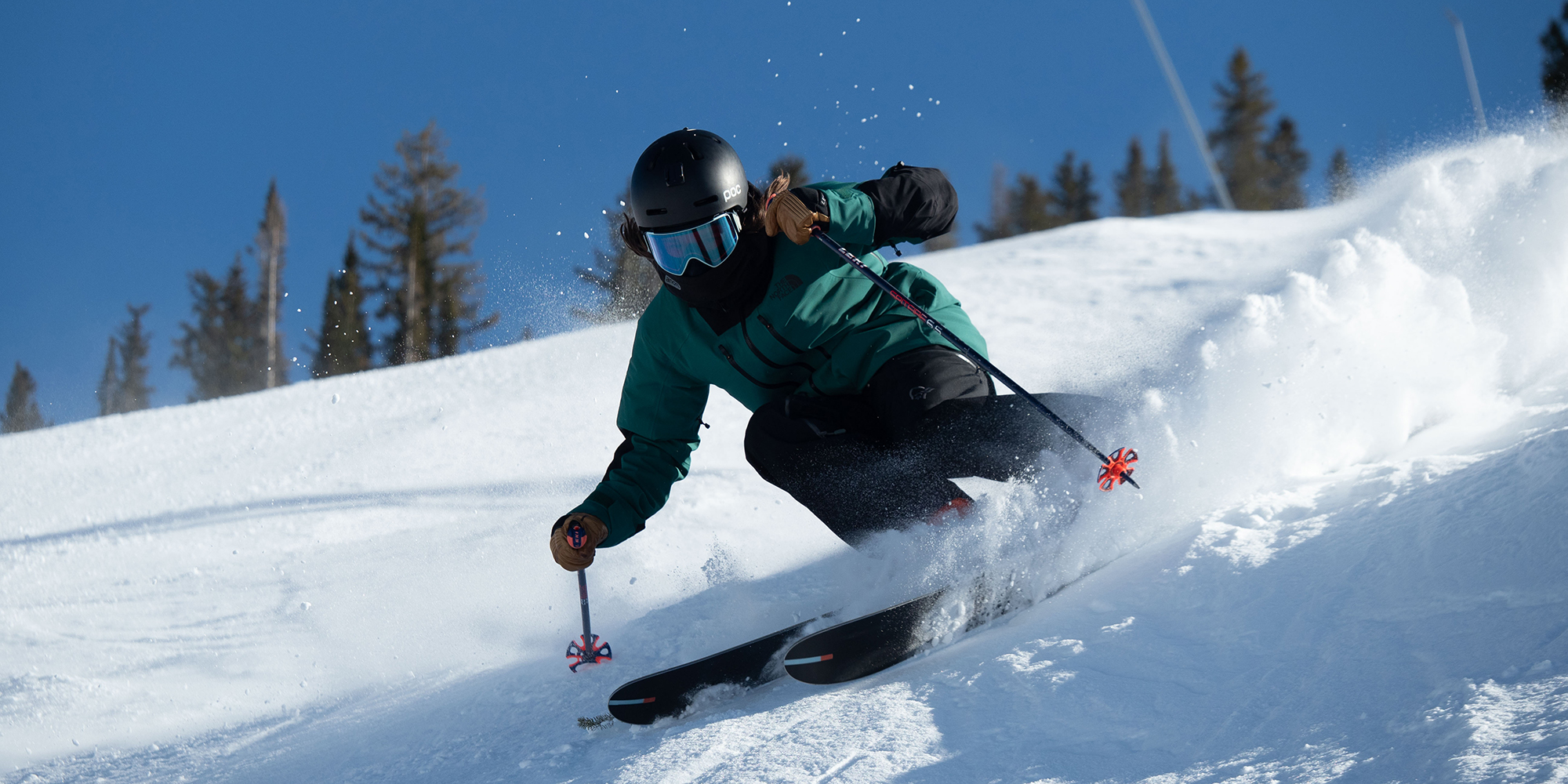

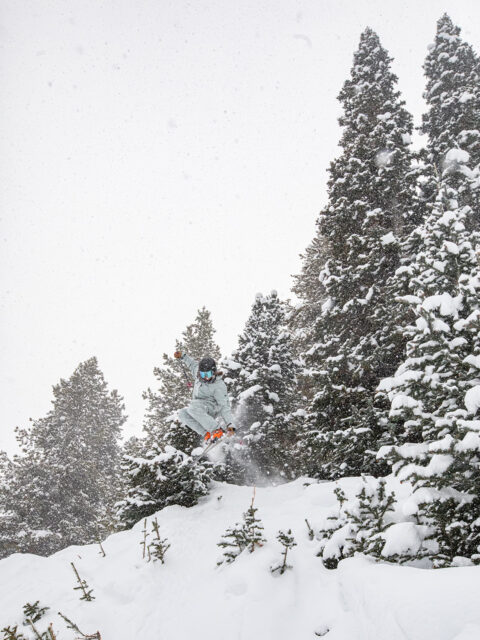
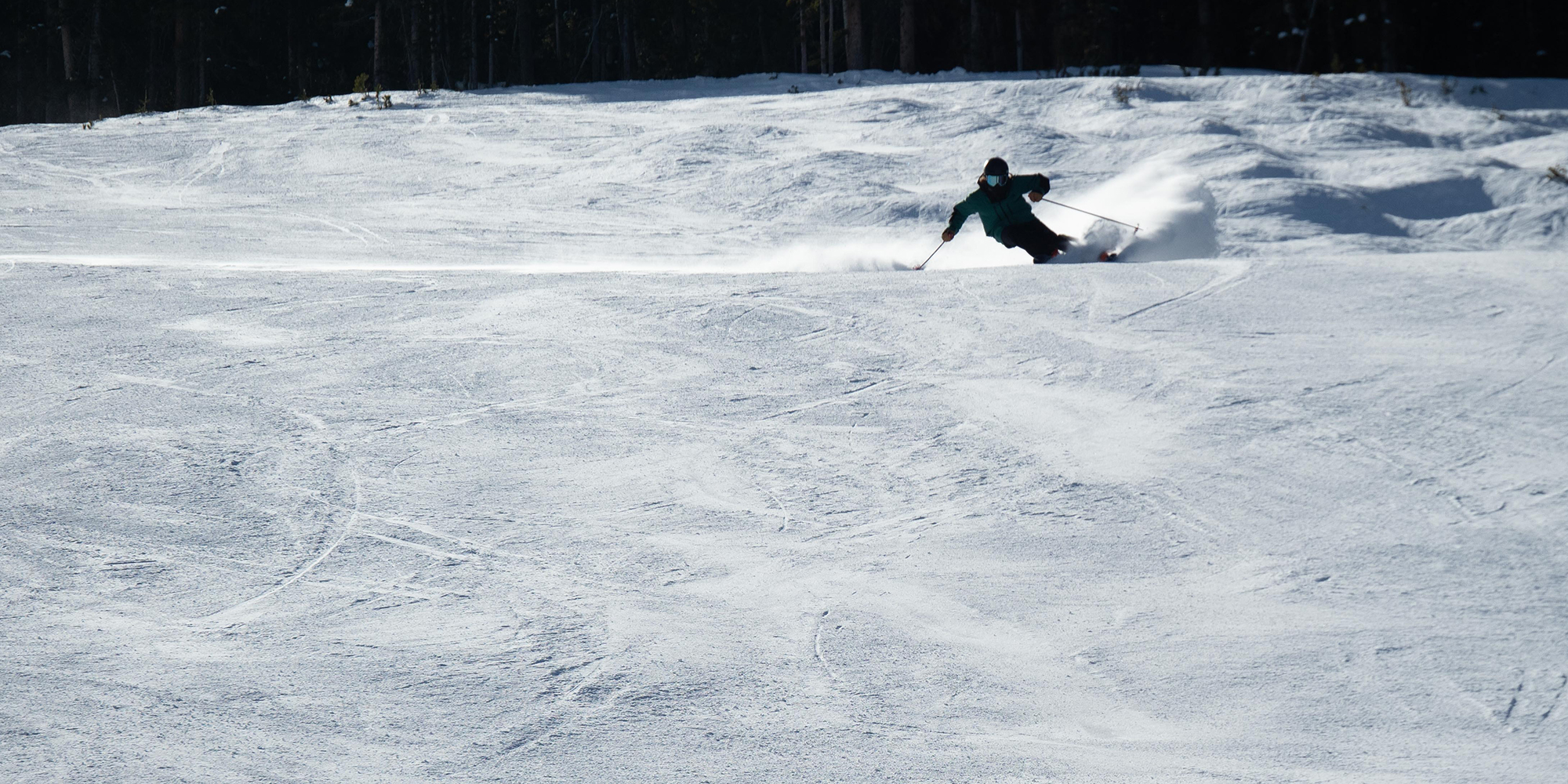
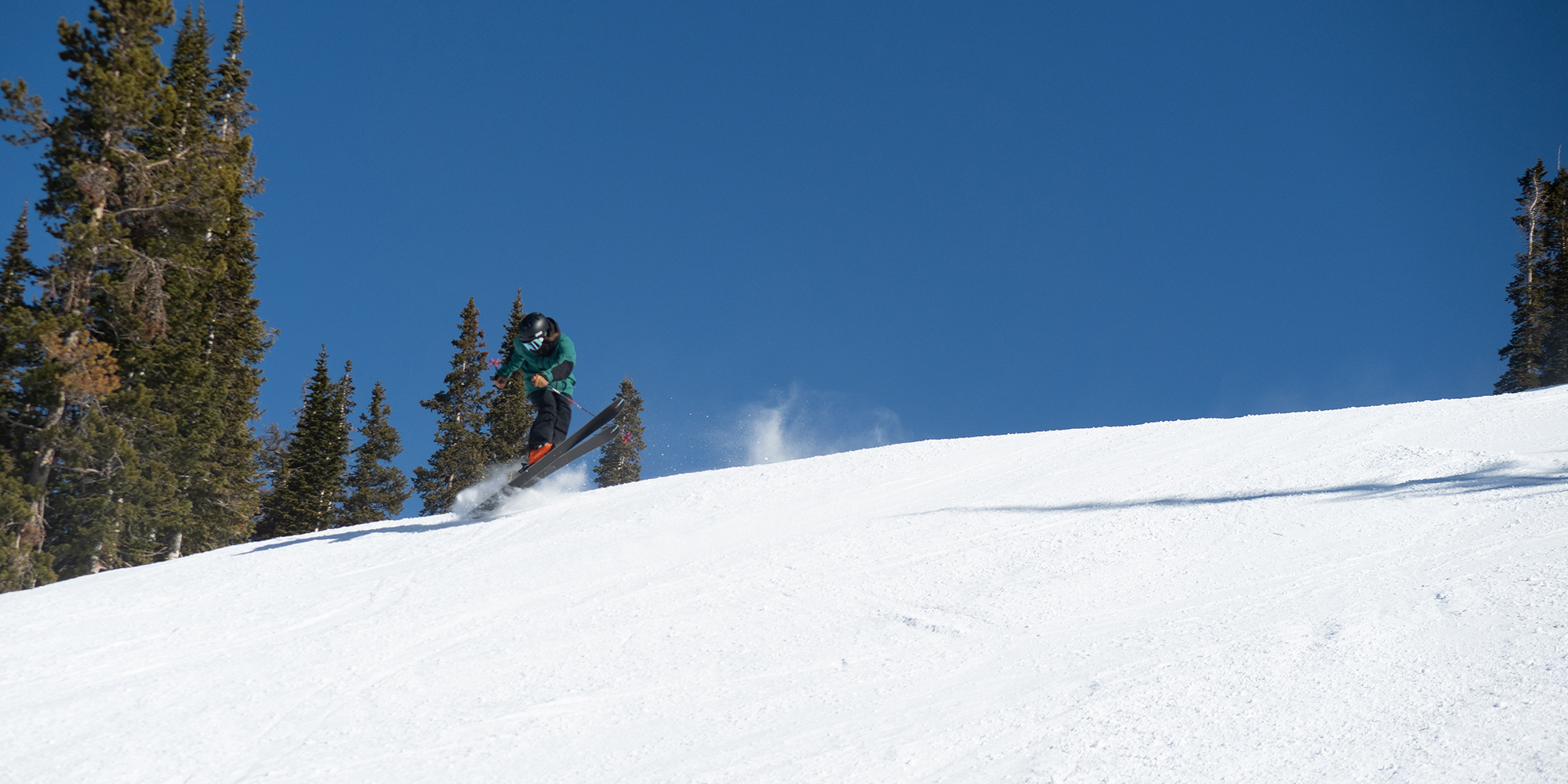
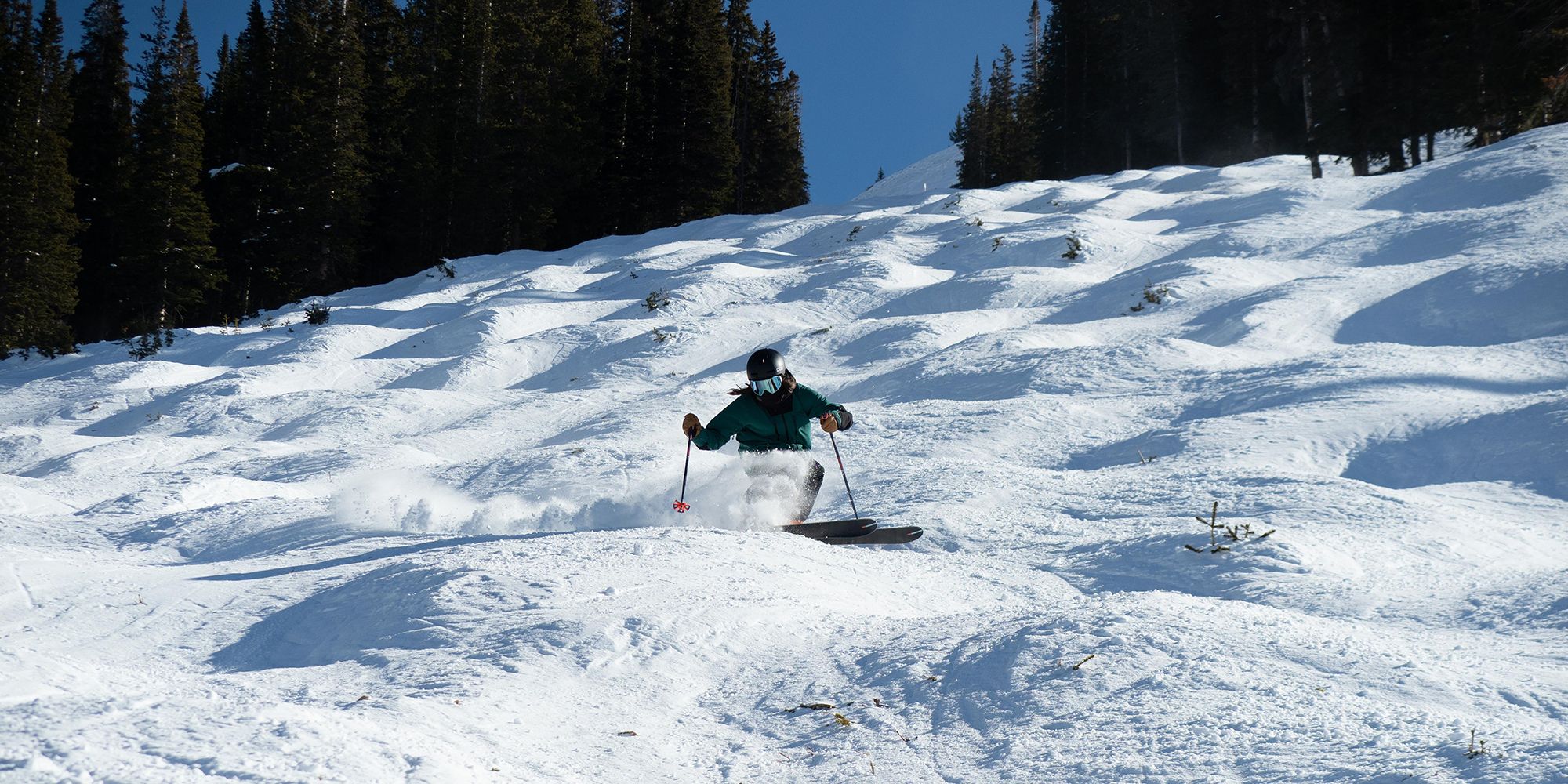
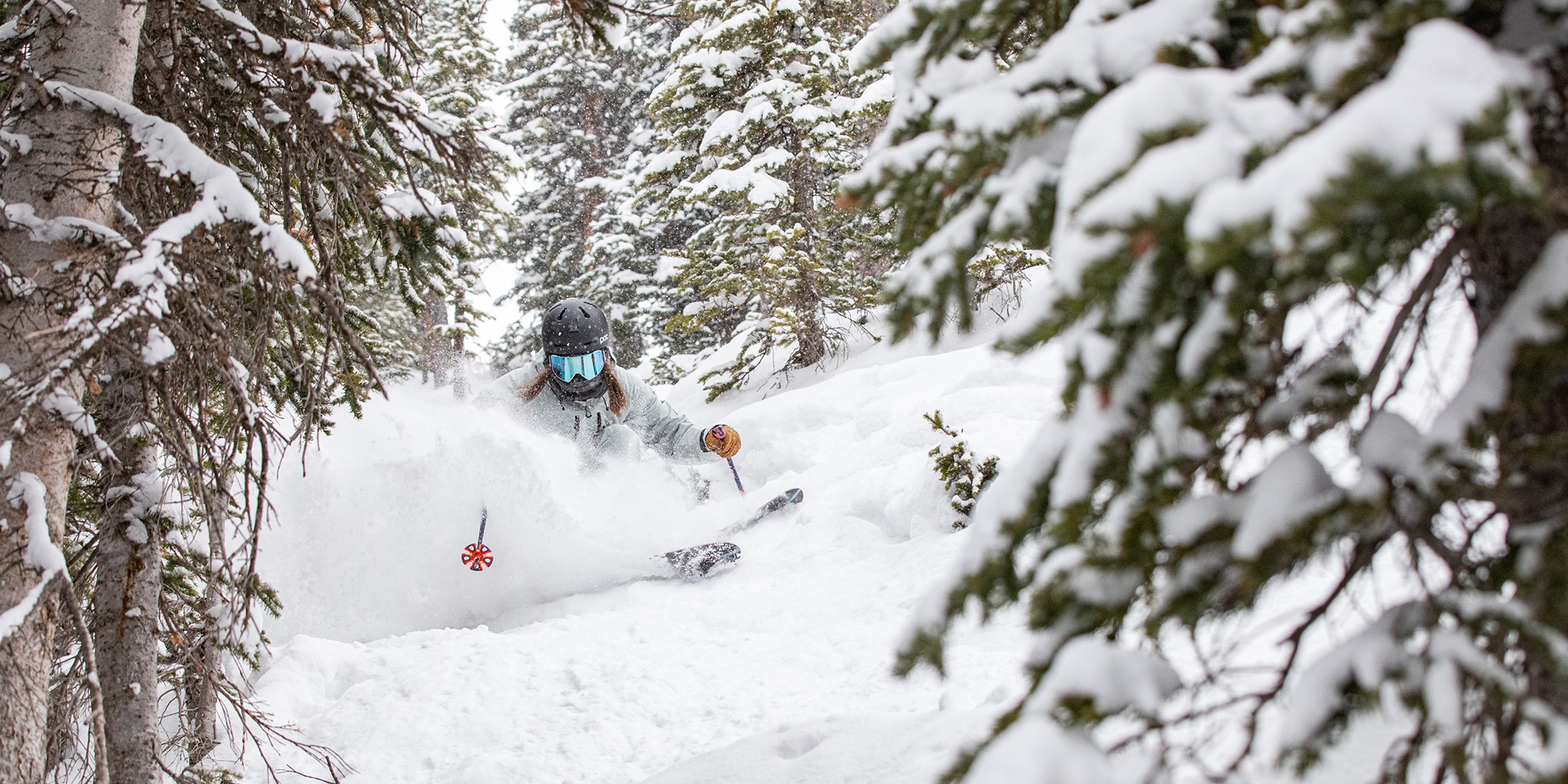
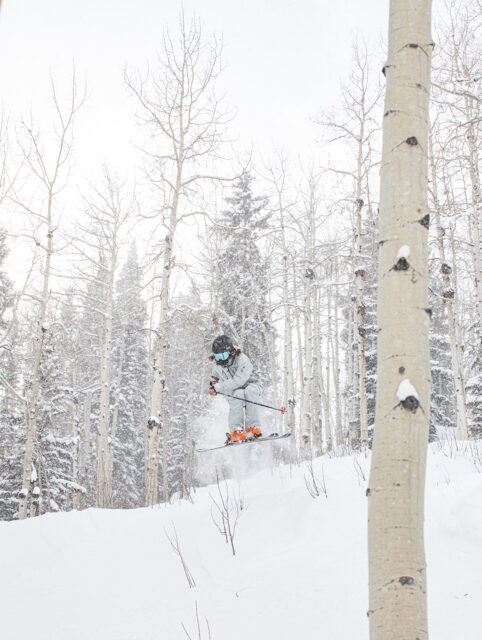
Thanks for the review!
Based on specs and your impressions, would it be completely wrong to describe it as a narrower 15/16 Line Sir Francis Bacon?
I liked that ski a lot, but found it a bit too wide and in retrospect I should have mounted it further back from the Pollard’s mount point (no switch skiing here).
Unfortunately, I never got a chance to ski that iteration of the SFB. Based on what others have said, I suspect the Aero would be more damp and stable, but not as loose / maneuverable. Not sure I could confidently say much more other than that, though.
How about a picture with the skis clamped together so we can see the rocker, that picture only tells us how much camber it has, which is why it doesn’t like to slash.
Did you click through the slideshow to see the close-up shots of the tips and tails? They’ll give you a better idea of what the tip and tail rocker looks like. For all the skis we review, we post a full rocker / camber profile picture, and then close-ups of the tips and tails so that you can compare them and see how each ski’s rocker / camber profile compares to another’s.
Have had these mounted up for a couple months and finally got them out in some typical early season east coast conditions. For some background, I tend to prefer skiing with a more balance/centered stance. If I see any terrain features that are more interesting than the groomed area, you can bet I’m headed that direction. I’ll often play around towards the sides of trails where the snow is typically softer, making some pivoted turns in that area and then popping back up onto the “trail” for a few carved turns before repeating the process. With this said, if I’m on wide open flat terrain: I will get aggressive, adopt a forward stance and drive drive the tips hard down into the snow to help generate more edge pressure/grip and turn powerfully.
For these reasons, I like a ski that is mounted very close to the middle. I prefer less tip length, because it doesn’t really benefit my style – while more tail length gives me support when landing airs. I also really like going backwards. However, I want a ski with a fairly strong shovel so that when I do drive the ski from a more centered mount, it doesn’t fold in half. My main/comfort ski has been the Black Crows Atris (mounted +4.5 from recommended/-3 from true center); this ski is very well rounded in my opinion. It rewards a dynamic and playful style with my mount point, its lighter weight and medium flex, as well as its fair amount of rocker. But unlike more freestyle oriented skis, when you drive the shovel hard it instantly picks up a surprising amount of precision and energy from one turn to the next. I attribute this to its strong and flatter than usual tail design. I also own the Volkl Revolt 104 – this ski doesn’t remind me at all of the Atris. It is mounted even further forward (-1.75 from center) and has much more rocker and taper overall which make it a lot looser and more freestyle/trick oriented. I only choose the Revolt if I know I’m going to be spending a lot of time in the park.
Anyways, you may be reading this and thinking: the Atris [108] and the Revolt 104? Why are you clowning around on such fat skis when you’re primarily skiing hard pack in New England? Well, my first ski ever was a fully cambered 4FRNT park ski with absolutely no float or pivotability to speak of. Any time it used to snow more than an inch, I hated my life. I’ve been focused on filling my quiver with skis that are capable across a broader spectrum of snow depth and prioritized something that can make the occasional pow day super fun. I also do a few trips out west each year and tailor my needs largely with that in mind. Moral of the story is, I’ve found skis that can do that – and this year was time to buy something more in line with the typical hard snow conditions that it will see.
The Season Aero was an extremely easy and clear choice. It’s a fairly narrow ski with a lot of camber and incorporates metal – pointing to its prioritization of edge grip and energy on hard snow as well as added dampness and performance in variable conditions. It also markets a centered mount point and turned up tail which speaks to a playful/centered skiing methodology. It’s also “cool” and new to the market from a company founded by Eric Pollard – so what’s not to love. After reading Luke’s review of the ski and trusting that it is a strong and precise tool that still packs an aptitude for playfulness and some off-piste performance, I was sold.
I decided to mount +1 from recommended/-1.8 from true center. After reading that Luke could get pretty forward on the ski and drive the tips at recommended, I felt like going +1 wouldn’t compromise much/any of that but give me a little more confidence on rails/switch. I’ve never skied anything aimed at hard snow performance and my first few turns were a little scary. Right away, I could tell this ski is a lot different from the looser skis I am accustomed to. The edges wanted to dig in and the ski wanted to take me for a ride in the direction of the side cut. This thing has a lot of edge grip and feels very stiff at slow speeds, but if you go bases flat and pivot it from the center it will go wherever you want. I spent my first couple runs warming up and skiing it in this way, how I usually ski wider looser skis. It responded well to this and unless I deliberately tried to carve a turn, the ski was happy to just play around. It felt a little tip heavy in the air, but I got used to that pretty quickly.
Later in the day I decided it was time to open the thing up and try to learn how to tame a carved turn on it. Starting out slow and doing more balanced carves with lateral weight transfer, I felt a little let down by the turn radius. With more speed and with a lot more forward stance than I’m used to though, I started finding an ability to bend the ski into tighter turn shapes. When you do put in enough energy to bend this thing, it feels like a bad ass race ski (at least to me – a user of center mounted freestyle planks). The ski can be loaded up with a lot of energy when bent in a deep carve and will release that between turns, setting up for another powerful turn; this was a sort of cascading affect that helps build more energy the more turns are made. I did take Luke’s tip to focus on maintaining pressure on the outside ski during a turn. On very firm/icy spots of my runs – the ski would sometimes kind of slip out and I do agree this is likely because of how much camber it has. It wants to “rebound” back into its passive cambered shape – so you have to keep both skis bent the same amount to keep them going the same direction. If one slips out a little during a turn, it will release fully and send that ski in a different direction and the turn is botched. This is so apparent on the Aero vs. other skis because the Aero is quite stiff and difficult to bend – a lot of other skis may be easier to recover during a turn because you can quickly bend them back into the turn shape with less strength.
The way that this ski let me enjoy it with a laid back and more playful style in the beginning of the day and gradually work my way up to tackling the challenge of skiing it powerfully had me walking away from the day with a big smile and a lot of thoughts for the ride home. Up until clicking into the Aero, I have enjoyed all the skis I’ve owned and quickly come up with the adjustments needed to ride them, all while maintaining my preferred playful and dynamic style of skiing. After clicking into the Aero, my enjoyment of all the skis I’ve owned/used remains, but I will need to improve at forward aggressive skiing to get the most out of them. I look forward to breaking them out most days that the snow is hard – knowing I can ski them in a graceful and bouncy manner and fall back on having fun. But always knowing that I can put them up high on their edges and pretend I’m racing through gates for gold.
Anyone coming from a background of playful centered skis and who are looking for something more precise and able to challenge them on piste will, in my opinion, thoroughly enjoy the Season Aero. This can also be said for those who come from a background in powerful and challenging on piste skis, who would like to explore the playful side the Aero has to offer.
Do you think this would make for a good 50/50 setup mounted with a shift?
Aero vs kin comparison?
Hey Ed, you can find this comparison in our Deep Dive comparisons for the Season Kin. Become a BLISTER+ Member to get access to all content, exclusive discounts, personalized gear recommendations, and the best outdoor injury insurance on the market.